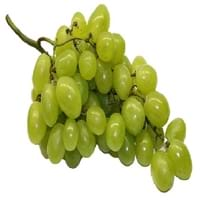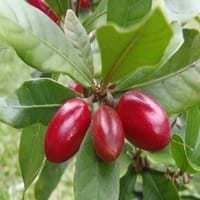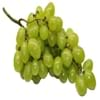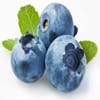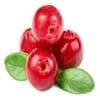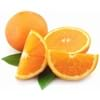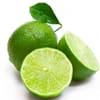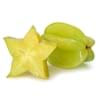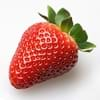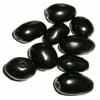Health Benefits
Cancer prevention, Kidney stone treatment, Prevents constipation, Treatment of alzheimer's disease
Good for diabetics, Improves well-being, Miraculin/miracle fruit makes sour things taste sweet
General Benefits
Digestive aid, Improves eye vision, Maintains healthy cholesterol level, Treatment of migraine
Has taste modifying effect
Skin Benefits
Anti-aging benefits, Heals sunburn, Skin rejuvenation, Treatment of dark spots
NA
Hair Benefits
Prevents hair loss, Regulates hair growth, Treatment of dandruff
NA
Allergy Symptoms
Anaphylaxis, Asthma, Breathing difficulty, Coughing, Drop in blood pressure, Hives, Skin rash, Stuffy nose, Swelling of mouth, tongue or lips, Wheezing
Itching, Skin rash
Side Effects
Allergic reaction, Skin rash, Might slow down the process of blood clotting
Changes taste of food eaten after this fruit, Coagulation
Best Time to Eat
As a snack in the late afternoon, Don't consume at night and before bed, Eat the fresh ones, avoid mixing with any other foods, don't eat after meal., Morning time (before lunch)
As a snack in the late afternoon, Eat the fresh ones, avoid mixing with any other foods, don't eat after meal., Morning time (before lunch)
Protein to Carb Ratio
Not Available
Vitamin A (Retinol)
Not Available
Vitamin B1 (Thiamin)
Not Available
Vitamin B2 (Riboflavin)
Not Available
Vitamin B3 (Niacin)
Not Available
Vitamin B5 (Pantothenic Acid)
Not Available
Vitamin B6 (Pyridoxin)
Not Available
Vitamin B9 (Folic acid)
Not Available
Vitamin C (Ascorbic Acid)
Vitamin K (Phyllochinone)
Not Available
Lutein+Zeaxanthin
Not Available
Phytosterol
Not Available
Water Content
Not Available
Calories in Fresh Fruit with Peel
Not Available
Calories in Fresh Fruit without Peel
Not Available
Not Available
Calories in Frozen Form
Not Available
Calories in Dried Form
Not Available
Calories in Canned Form
Not Available
Calories in Juice
Not Available
Calories in Jam
Not Available
Calories in Pie
Not Available
Season
Autumn, Summer
Monsoon
Varieties
Cabernet Sauvignon, Merlot, Pinot Noir, Syrah/Shiraz and Zinfandel
Gymnema Sylvestre and Thaumatococcus Daniellii
Color
Green, Red
Dark red
Inside Color
Light Green
Greyish-white
Taste
Sweet-Sour
NA, Sweet
Origin
Western Asia, Central Europe
West Africa
Soil Type
Clay loam, Sandy loam
Well-drained
Climatic Conditions
Warm
Rainfall
Facts about
- If left alone, a grapevine can spread 50 feet and even more.
- There are more than 8,000 varieties of grape worldwide.
- They are available in 7 different colors: red, green, white, black, purple, blue and golden.
- The name 'Miracle' because of the magical experience you get after eating it.
- When you have lemon after eating this fruit, it tastes sweet as if it is added with sugar.
- It is also used as natural sweetener.
Other Countries
Argentina, Armenia, Australia, Chile, France, Iran, Italy, Portugal, Romania, Turkey, United States of America
NA
Top Importer
United States of America
Not Available
Top Exporter
Chile
United States of America
Botanical Name
Vitis vinifera
Synsepalum Dulcificum
Synonym
Not Available
Miracle Berry, Miraculous Berry and Sweet Berry
Subkingdom
Tracheobionta
Tracheobionta
Division
Magnoliophyta
NA
Subclass
Rosidae
Asteridae
Family
Vitaceae
Sapotaceae
Species
Vitis vinifera
S. dulcificum
Generic Group
Grape
Not Available
Difference Between Grape and Miracle fruit
We might think that Grape and Miracle fruit are similar with respect to nutritional value and health benefits. But the nutrient content of both fruits is different. Grape and Miracle fruit Facts such as their taste, shape, color, and size are also distinct. The difference between Grape and Miracle fruit is explained here.
The amount of calories in 100 gm of fresh Grape and Miracle fruit with peel is 69.00 kcal and Not Available and the amount of calories without peel is Not Available and Not Available respectively. Thus, Grape and Miracle fruit belong to Low Calorie Fruits and Low Calorie Fruits category.These fruits might or might not differ with respect to their scientific classification. The order of Grape and Miracle fruit is Vitales and Ericales respectively. Grape belongs to Vitaceae family and Miracle fruit belongs to Sapotaceae family. Grape belongs to Vitis genus of Vitis vinifera species and Miracle fruit belongs to Synsepalum genus of S. dulcificum species. Beings plants, both fruits belong to Plantae Kingdom.
